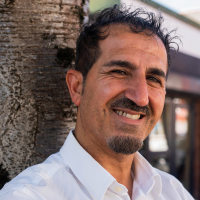Cardiff Walking and Cycling Index
Formerly known as Bike Life, this is the UK's biggest ever study of walking, wheeling and cycling.
In recent years, Cardiff Council has prioritised walking and cycling by investing in active travel infrastructure. These new routes have emerged as essential connections, bolstering the resilience and vitality of communities.
Every year, walking and cycling in Cardiff results in:
745
serious long-term health conditions prevented
£245.5 million
in economic benefit for individuals and the region
17,000 tonnes
of greenhouse gas emissions saved
Up to 92,000
cars taken off the road every day

Salah
Many people claiming asylum who live in Cardiff start off cycling because it’s more affordable and easier than driving a car. It’s really important to maintain that, to encourage people to continue cycling.
Within the Kurdish community here, cycling isn’t popular, but I’ve set up a Sunday afternoon cycling group. It’s a good, but small group.
One thing I really want to do is to get more people into this group and involve women cycling.
It’s just not something Kurdish women are used to, but I want to change that.

Download the Cardiff Walking and Cycling Index
See Cardiff's vision for walking, wheeling and cycling.
Cardiff through the years
This is the fifth time we've collaborated with Cardiff Council to survey active travel in the city. Download our previous reports:





